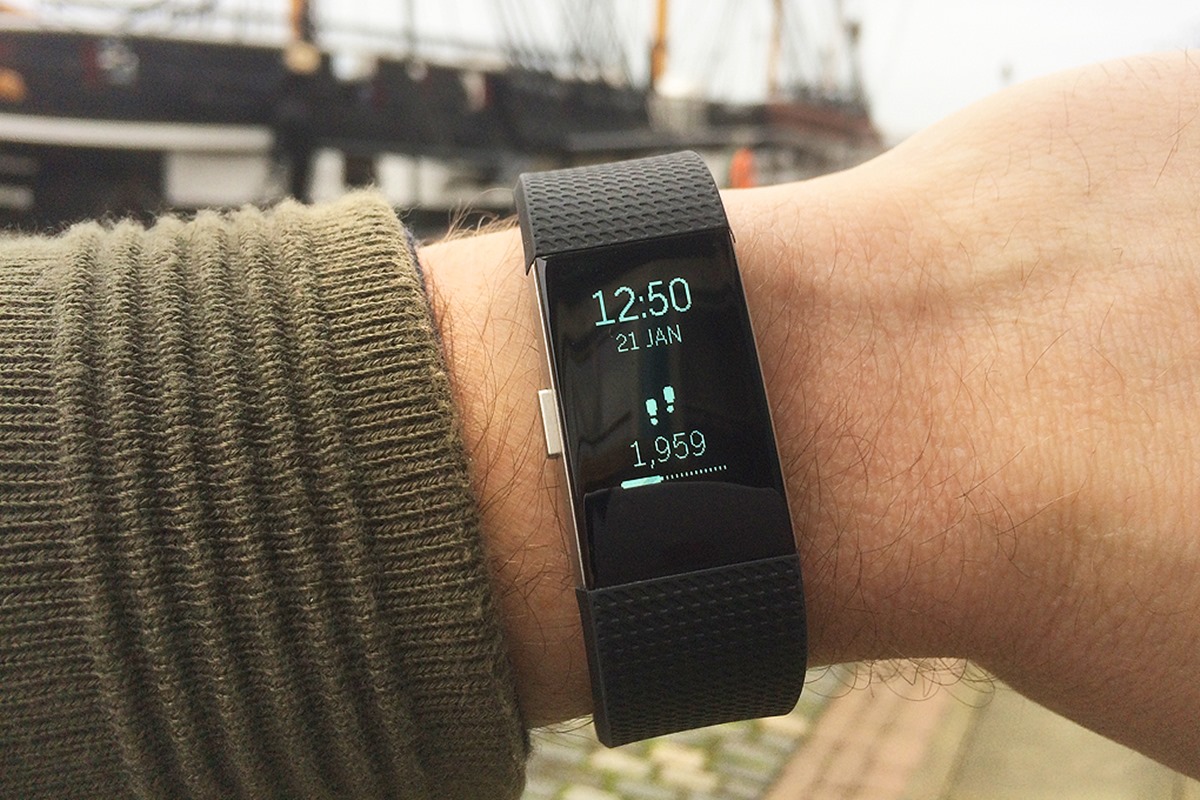Home>Misc>Featured>What Is Heart Rate Based Interval Training


Featured
What Is Heart Rate Based Interval Training
Modified: January 2, 2024
Discover the benefits of heart rate based interval training with our featured guide. Improve your fitness and maximize your workouts with this effective training method.
Introduction
Welcome to the world of heart rate based interval training, where fitness meets science to optimize your workouts and achieve maximum results. Whether you’re a seasoned athlete or new to the fitness game, understanding and incorporating this training method can take your fitness journey to the next level.
Heart rate based interval training involves manipulating your heart rate through alternating intensities to challenge your cardiovascular system and improve overall performance. It combines periods of high-intensity exercise with recovery or rest periods, creating a dynamic and efficient workout that can benefit individuals of all fitness levels.
Unlike traditional steady-state cardio workouts, such as jogging or cycling at a consistent pace, heart rate based interval training encourages you to push your limits and work at different intensity levels, giving your body the opportunity to adapt and improve. By targeting specific heart rate zones, you can optimize energy expenditure, enhance endurance, and improve cardiovascular health.
One of the key aspects of heart rate based interval training is the individualized approach it offers. Everyone’s body is unique, and what works for one person may not work for another. By understanding your own heart rate zones and working within them, you can tailor your training to meet your specific fitness goals, whether they be fat loss, improved performance, or increased cardiovascular fitness.
In this article, we will delve deeper into heart rate based interval training, exploring its benefits, how to determine your target heart rate, and how to design a program that works for you. We’ll also provide a sample workout and offer some tips for success. So, let’s jump right in and discover the world of heart rate based interval training!
Definition of Heart Rate Based Interval Training
Heart rate based interval training, also known as HR-based interval training, is a method of exercise that involves alternating periods of high-intensity exercise and active recovery or rest. It focuses on manipulating your heart rate to optimize your workout and achieve specific fitness goals.
During heart rate based interval training, you work within different heart rate zones, each corresponding to a specific intensity level. These zones are determined by your maximum heart rate (MHR) and are typically expressed as a percentage of your MHR.
The high-intensity periods, often referred to as “work” or “work intervals,” aim to elevate your heart rate to a target zone usually between 70% and 85% of your MHR. This challenges your cardiovascular system, stimulates calorie burn, and improves endurance.
The active recovery or rest periods, on the other hand, allow your heart rate to lower and provide a chance to recover before the next high-intensity interval. This helps prevent overexertion, reduce fatigue, and prepare your body for the next burst of intensity.
Heart rate based interval training can be implemented in various forms of cardiovascular exercise, such as running, cycling, rowing, or using cardio machines like ellipticals or stair climbers. The duration and intensity of the intervals can be adjusted based on your fitness level and goals.
It’s important to note that heart rate based interval training is flexible and adaptable. Depending on your goals, you can customize the duration of the intervals, the intensity level, and the ratio of work to recovery periods. This allows for a personalized approach that can be tailored to suit different fitness levels and preferences.
By incorporating heart rate based interval training into your fitness routine, you can optimize your workouts, challenge your body, and achieve significant improvements in cardiovascular endurance, calorie burn, and overall fitness.
Benefits of Heart Rate Based Interval Training
Heart rate based interval training offers a plethora of benefits that make it a valuable addition to any fitness regimen. Here are some of the key advantages:
- Improved Cardiovascular Endurance: By pushing your heart rate into higher intensity zones during the work intervals, you challenge and strengthen your cardiovascular system. Over time, this leads to improved cardiovascular endurance, allowing you to sustain higher levels of activity for longer durations.
- Efficient Calorie Burn: Heart rate based interval training has been found to be highly effective for burning calories. The high-intensity intervals elevate your heart rate and metabolism, leading to an increased caloric expenditure not only during the workout but also post-workout as your body continues to recover.
- Increased Fat Burning: The combination of high-intensity intervals and active recovery periods triggers a phenomenon called excess post-exercise oxygen consumption (EPOC). EPOC refers to the increased oxygen consumption that occurs after exercise, which can lead to a higher rate of fat burning as your body works to replenish energy stores and recover from the intense workout.
- Enhanced Aerobic Capacity: Heart rate based interval training improves your body’s ability to use oxygen efficiently, leading to enhanced aerobic capacity. This means that you can perform at higher intensities before reaching exhaustion, allowing you to excel in various physical activities, from running to swimming to playing sports.
- Time Efficiency: Heart rate based interval training offers a time-efficient approach to exercise. With shorter, intense bursts of activity and strategically planned recovery periods, you can achieve significant health and fitness benefits in a shorter amount of time compared to traditional longer duration, steady-state cardio workouts.
- Variety and Motivation: One of the advantages of heart rate based interval training is its versatility. You can incorporate a wide range of exercises and equipment into your workouts, allowing for variety and preventing boredom. Additionally, the varying intensities and the challenge of reaching and maintaining target heart rate zones can keep you motivated and engaged.
These benefits make heart rate based interval training an effective and efficient method for improving cardiovascular fitness, burning calories, and enhancing overall health and well-being.
How to Determine Your Target Heart Rate
Determining your target heart rate is crucial for effectively implementing heart rate based interval training. It allows you to work within specific intensity zones that will challenge your cardiovascular system and help you achieve your fitness goals. Here’s how you can determine your target heart rate:
- Calculate Your Maximum Heart Rate (MHR): The first step in determining your target heart rate is calculating your maximum heart rate. The commonly used formula is 220 minus your age. For example, if you are 30 years old, your estimated MHR would be 190 beats per minute (bpm).
- Identify Your Target Heart Rate Zones: Once you have your MHR, you can determine your target heart rate zones by working with percentages of your MHR. The most commonly used zones are as follows:
- Zone 1: 50-60% of MHR (low intensity)
- Zone 2: 60-70% of MHR (moderate intensity)
- Zone 3: 70-80% of MHR (high intensity)
- Zone 4: 80-90% of MHR (very high intensity)
- Consider Your Fitness Level and Goals: It’s important to consider your fitness level and goals when determining which target heart rate zone to work within. If you’re a beginner or have specific health concerns, you may want to start with lower intensity zones and gradually progress. If your goal is to improve endurance or burn more calories, you may focus on higher intensity zones.
- Listen to Your Body: While target heart rate zones provide a guideline, it’s essential to listen to your body during exercise. Factors like hydration, fatigue, and individual differences can affect your heart rate response. If you feel uncomfortable or experience any concerning symptoms, it’s important to adjust the intensity or seek guidance from a healthcare professional.
Keep in mind that target heart rate zones are not static and may vary based on factors such as fitness level, age, and overall health. Adjustments may be needed as you progress and become more comfortable with heart rate based interval training.
Monitoring your heart rate during workouts is essential to ensure you are working within your target zones. This can be done using heart rate monitors, fitness trackers, or by measuring your pulse manually. Optimal intensity and progress can be achieved by regularly reassessing and adjusting your target heart rate zones as needed.
Designing a Heart Rate Based Interval Training Program
Designing a heart rate based interval training program requires careful consideration of your fitness level, goals, and available time. Here are some steps to help you create an effective program:
- Set Clear Goals: Determine what you want to achieve with your training. Whether it’s improving cardiovascular endurance, losing weight, or enhancing performance in a specific sport, having clear goals will guide the structure of your program.
- Assess Your Fitness Level: Understand your current fitness level to design an appropriate program. Consider factors such as your cardiovascular endurance, strength, and flexibility.
- Choose Suitable Exercises: Select exercises that align with your goals and preferences. Consider activities such as running, cycling, swimming, or using cardio machines at the gym. Variety in exercises can help maintain motivation and prevent boredom.
- Determine Duration and Frequency: Decide how often you will perform heart rate based interval training sessions and how long each session will last. Consider your schedule, recovery capacity, and the time commitment required for your goals.
- Plan Intervals: Determine the work and recovery intervals for each session. The length and intensity of these intervals will depend on your fitness level and goals. Start with shorter work intervals and longer recovery intervals if you’re new to interval training, then gradually increase the intensity and duration as you progress.
- Warm-Up and Cool-Down: Don’t forget to include a warm-up and cool-down in your program. Allocate time at the beginning of each session for a dynamic warm-up to prepare your body for the workout and decrease the risk of injury. After the intervals, include a period of low-intensity exercise or stretching to gradually return your heart rate to normal and promote recovery.
- Track Your Progress: Keep a record of your workouts to track your progress and make adjustments as necessary. Record the duration, intensity, and any variations you make to your intervals. This data will help you identify patterns and assess the effectiveness of your program.
Remember, designing a heart rate based interval training program is not a one-size-fits-all approach. It’s essential to tailor the program to your individual needs and progress gradually to prevent overexertion or injury.
Consulting with a fitness professional or personal trainer can also provide valuable guidance in designing a program that aligns with your goals and helps you optimize your results.
Sample Heart Rate Based Interval Training Workout
Here’s a sample heart rate based interval training workout that you can use as a starting point to structure your own sessions. This workout incorporates running intervals, but you can adapt it to suit your preferred exercise mode:
- Warm-Up: Begin with a 5-10 minute warm-up of light jogging or dynamic stretching to prepare your body for the workout.
- Interval 1: Start with a work interval at 70-80% of your maximum heart rate for 2 minutes. Push yourself to a challenging pace, but maintain good form and breathing control.
- Recovery 1: Transition into a recovery interval at 50-60% of your maximum heart rate. Slow down to a comfortable pace, allowing your heart rate to drop and your breathing to regulate for 1-2 minutes.
- Interval 2: Increase the intensity again with another work interval at 70-80% of your maximum heart rate for 3 minutes. Push yourself to maintain the pace and challenge your cardiovascular system.
- Recovery 2: Recover with a 1-2 minute interval at 50-60% of your maximum heart rate. Use this time to catch your breath and prepare for the next work interval.
- Interval 3: Push your limits with a longer work interval at 70-80% of your maximum heart rate for 4 minutes. Focus on maintaining form, breathing rhythm, and mental resilience during this challenging phase.
- Recovery 3: Take a 2-minute recovery interval at 50-60% of your maximum heart rate. Utilize this time to recover and prepare for the final work interval.
- Interval 4: Finish strong with a final work interval at 70-80% of your maximum heart rate for 5 minutes. This interval will test your endurance, mental toughness, and ability to sustain a higher intensity for longer.
- Cool-Down: Complete the workout with a 5-10 minute cool-down of light jogging or walking. Allow your heart rate to gradually decrease and include static stretching for major muscle groups to promote flexibility and recovery.
Remember, this is just an example, and you can modify the duration and intensity of the intervals based on your fitness level and goals. As you progress, you can gradually increase the duration of the work intervals or decrease the duration of the recovery intervals.
It’s recommended to consult with a fitness professional or personal trainer to ensure the workout aligns with your individual needs and fitness level.
Tips for Success with Heart Rate Based Interval Training
Heart rate based interval training can be an effective and rewarding method for improving your fitness and achieving your goals. Here are some tips to help you succeed and get the most out of your training:
- Know Your Baseline: Before starting heart rate based interval training, assess your fitness level and understand your current heart rate zones. This will help you set realistic goals and tailor your training to your individual needs.
- Gradually Increase Intensity: Start with shorter work intervals and longer recovery periods, then gradually increase the intensity and duration of your work intervals as you become more comfortable and fit. Avoid jumping into high-intensity intervals right away to prevent injury or burnout.
- Listen to Your Body: Pay attention to how your body feels during the workout. If you feel overly fatigued or experience any pain or discomfort, scale back the intensity or take a longer recovery period. It’s important to prioritize safety and avoid pushing yourself beyond your limits.
- Maintain Proper Form: Focus on maintaining good form and technique during each interval. This will not only maximize the effectiveness of your workout but also reduce the risk of injury. If fatigue compromises your form, it’s a sign to slow down or take a rest.
- Stay Hydrated: Proper hydration is crucial for optimal performance and recovery. Drink water before, during, and after your workouts to replenish fluids lost through sweat and to support your body’s functions.
- Track Your Progress: Keep a record of your workouts, including the duration, intensity, and any modifications made. Regularly reviewing your progress will help you identify trends, assess improvement, and make necessary adjustments to your training program.
- Mix Up Your Workouts: Avoid monotony and keep your training exciting by incorporating different types of workouts and exercises. This will challenge your body in different ways and prevent boredom, helping you stay motivated and engaged.
- Recover and Rest: Allow your body adequate recovery time between training sessions. Rest days are just as important as workout days, as they give your body a chance to repair and rebuild muscle tissue. Listen to your body and adjust your training schedule accordingly.
- Seek Professional Guidance: If you’re new to heart rate based interval training or have specific fitness goals, consider working with a fitness professional or personal trainer. They can provide guidance, design a customized program, and ensure that you’re performing the intervals safely and effectively.
By following these tips, you can set yourself up for success and make the most of your heart rate based interval training sessions. Remember to be consistent, patient, and enjoy the journey of improving your fitness and achieving your goals.
Conclusion
Heart rate based interval training is a powerful tool that can take your fitness journey to new heights. By strategically manipulating your heart rate through alternating periods of high-intensity exercise and active recovery, you can optimize your workouts and achieve exceptional results.
Throughout this article, we explored the definition of heart rate based interval training, the benefits it offers, how to determine your target heart rate, and tips for success. We also provided a sample workout to help you get started.
Implementing heart rate based interval training into your fitness regimen can improve cardiovascular endurance, enhance fat burning, and increase overall fitness levels. It provides an efficient way to burn calories, challenge your body, and improve your aerobic capacity.
Remember to design a program that aligns with your fitness level, goals, and preferences. Gradually increase the intensity, listen to your body, and track your progress to ensure continued improvement. Be sure to prioritize proper form, hydration, and rest, and don’t hesitate to seek professional guidance if needed.
With dedication, consistency, and a clear understanding of your target heart rate zones, you can unlock the full potential of heart rate based interval training and experience significant transformations in your fitness and overall well-being.
So, lace up your shoes, grab your heart rate monitor, and get ready to unleash your full fitness potential through heart rate based interval training. It’s time to push your limits, achieve your goals, and embrace the amazing benefits that this training method has to offer.








